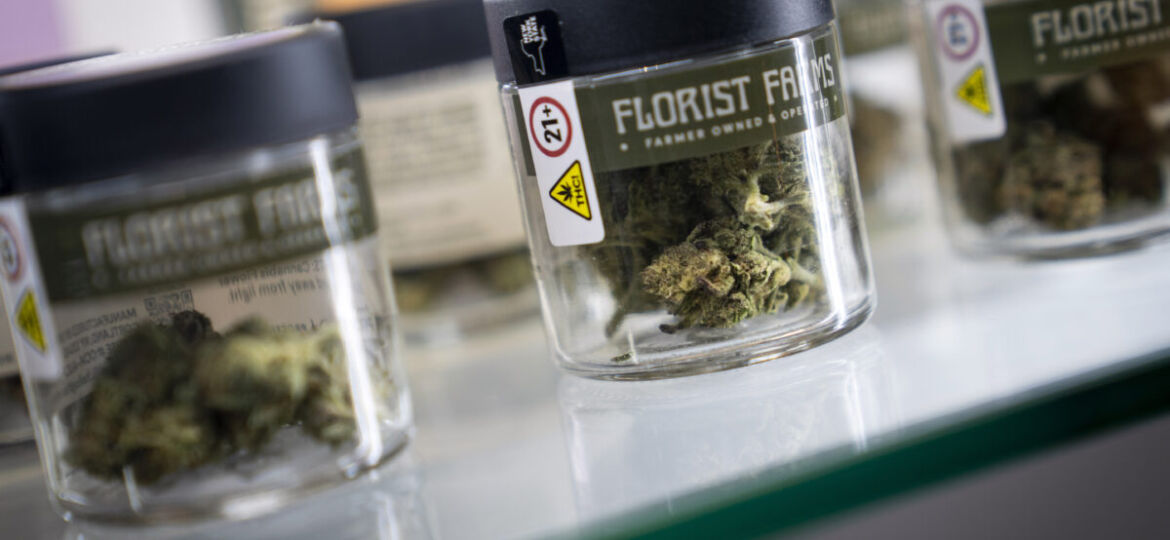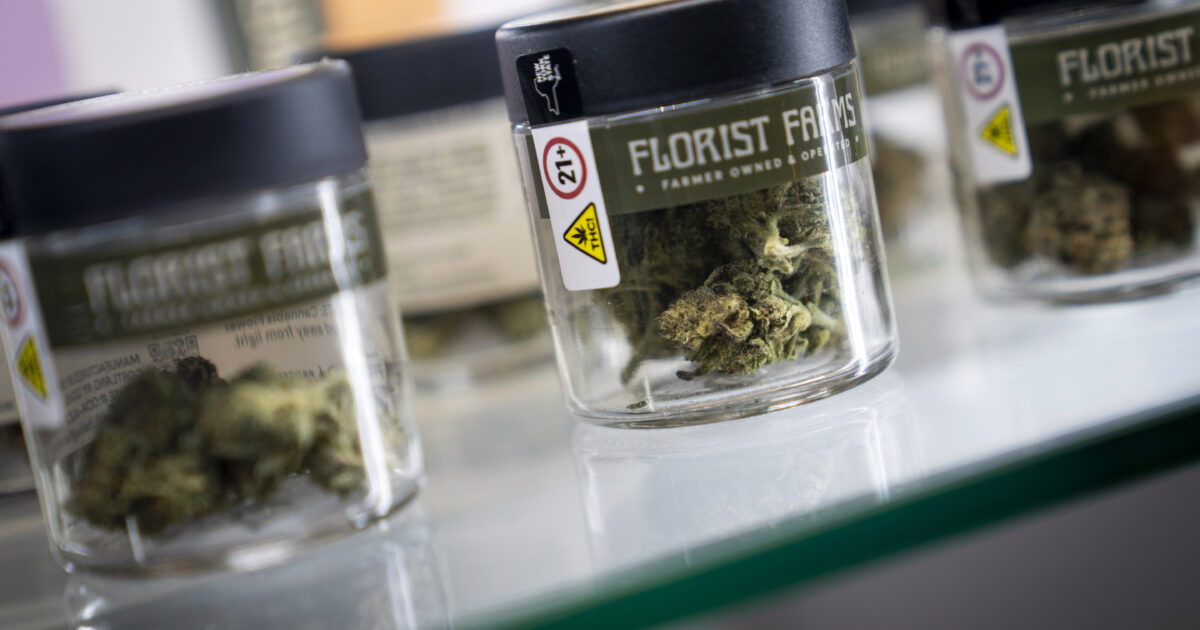

Now that Ohio has joined the nearly half of U.S. states that have legalized recreational marijuana, lawmakers are scrambling to put limits on the drug’s potency.
“It’s not our grandfather’s marijuana,” said Dr. James Avery, who is board certified in internal medicine and the author of Marijuana: An Honest Look at the World’s Most Misunderstood Weed. In the 1970s, marijuana contained about 1 percent to 3 percent tetrahydrocannabinol, or THC. The compound produces the “high” a user experiences when consuming the drug.
Today users consume a substance with a THC content of 18 percent to 23 percent, though THC concentrates found in gummies and edibles can reach as high as 95 percent potency. The statute that Ohio voters approved earlier this month sets a THC limit of 35 percent for plant material and 90 percent for extracts, but the language of the law has some people questioning whether those limits are minimums or maximums. Some Republican legislators hope to amend the 41-page piece of legislation for clarity before it takes effect on Dec. 7.
The debate is a part of a larger conversation about the long-term repercussions of consuming highly potent forms of the drug. As legalization efforts gain steam across the country, a growing body of studies is raising questions about whether the drug negatively affects the mental health of users, especially young people. Some public health experts warn the legalization push contributes to the perception of the drug as a natural remedy or harmless fun.
The number of Americans 12 and older who use marijuana daily or almost daily increased from 6.2 million in 2009 to 13.8 million in 2019. Since 2012, 24 states have legalized recreational marijuana.
Though marijuana is still illegal at the federal level, the Biden administration has taken a lenient posture toward the drug. Late last year, the president pardoned federal offenders previously convicted of marijuana possession. The Department of Health and Human Services directed the Drug Enforcement Administration to review marijuana’s classification as Schedule I, a substance deemed to have no medical use and a high potential for abuse.
Avery visited a dispensary in San Francisco to see how the industry promotes the drug. He recalled encountering sales representatives in white coats who advertised the drug as a cure-all. He said all of the medical lingo around marijuana encourages people to view the drug as “low-risk” and even healthy.
Avery told me that emergency room doctors are seeing patients who have overdosed on THC or are suffering from drug-induced paranoia or suicidal ideation. The Centers for Disease Control and Prevention reported a marked increase in emergency room visits among children and teenagers consuming toxic amounts of marijuana during the COVID-19 pandemic.
The legal cannabis industry is expected to hit $31.8 billion in annual sales by the end of 2023 and $50.7 billion by 2028. Connecticut and Missouri kicked off recreational sales at the beginning of this year and cannabis medical sales began in Mississippi.
Industry leaders market the drug as a treatment for anxiety, and an individual diagnosed with anxiety can receive a medical marijuana card in several states.
Irwin David Simon is the chief executive of Tilray Brands, which in 2018 became the first cannabis company to trade publicly on a major U.S. stock exchange. Earlier this year, he told investors at a conference that cannabis can be an alternative to pharmaceuticals for insomnia, anxiety, and cancer pain. “Have a little vape at night or have a little gummy at night,” he said. “I guarantee it’s going to change a lot of your life.”
Pot producers have funded several studies to back their claims. Researchers affiliated with a chain of cannabis clinics found that individuals suffering from anxiety and depression experienced clinically significant improvement when taking the drug. Patients in Florida reported relief from anxiety symptoms in some surveys.
But a growing number of studies associate regular consumption of highly concentrated THC with substance use and mental health disorders. A Nov. 13 study in JAMA Psychiatry reported a slight increase in problematic use among teens and adults in states where marijuana is legal. The Canadian Journal of Psychiatry published a review of research in 2020 associating cannabis use with increased odds of developing anxiety conditions. A study in The Lancet found daily users of products with a THC potency of 15 percent or higher were five times more likely to develop a severe mental illness like schizophrenia or psychosis. Cannabis users with anxiety and mood disorders experienced more severe symptoms according to a 2018 review of research in The Journal of Clinical Psychiatry.
Luke Niforatos is the executive vice president of Smart Approaches to Marijuana, an alliance of organizations and individuals opposed to marijuana legalization and commercialization. He argued marijuana makes people more vulnerable to opioid addiction. In a pamphlet, his organization cites a 2017 American Journal of Psychiatry study of over 30,000 American adults showing cannabis users were more than twice as likely to abuse prescription opioids even when controlling for age, race, family history, and other substance use disorders.
Jeffrey Miron is the vice president for research at the Cato Institute and director of graduate and undergraduate studies in the Department of Economics at Harvard University. He said most of the studies do not control for other variables and do not take into account whether people who have mental health issues may be more likely to use marijuana in the first place.
“You’ll notice a correlation. But it’s not causation,” he said. (The study in The Lancet did control for socioeconomic and drug-use variables.)
Whether or not the studies show genuine harms, Miron argued stricter regulations are not the answer. There will always be people who misuse the drug. Legalization allows the people using it responsibly to do so safely since they have a better idea of what they are consuming. Laws legalizing marijuana for adults over 21 don’t affect usage rates for underage youth, he claimed.
National Institute on Drug Abuse Director Nora Volkow made a similar claim before the Senate Committee on Health, Education, Labor, and Pensions last year. “Specifically in the United States, legalization by some states of marijuana has not been associated with an increase in adolescents’ marijuana use,” she said in response to a question.
Still, former president of the National Narcotics Officers’ Associations’ Coalition, Ron Brooks, said “perception of harm” plays a significant role in people’s relationship toward the drug. Many people take legalization to mean the drug is harmless or see it as an endorsement of its benefits. He noted that thanks to strict regulations on the tobacco industry, most people understand the risks associated with nicotine use. “We haven’t done a good job of perceiving harm on marijuana, despite the fact that it severely impacts mental health,” he said. “It is severely addicting. It is highly intoxicating.”
Though major media outlets are beginning to report on the risks associated with high potency THC, Avery worries that the “very unusual imbalance between public perception and science,” is setting the country up for a “wave of mental illness.”
“For some people who equate legality with wisdom … if it’s legal, then it’s okay,” Avery said. “The biggest problem has been the widespread perception that it’s risk-free, that it’s not addictive, that it’s natural.”

